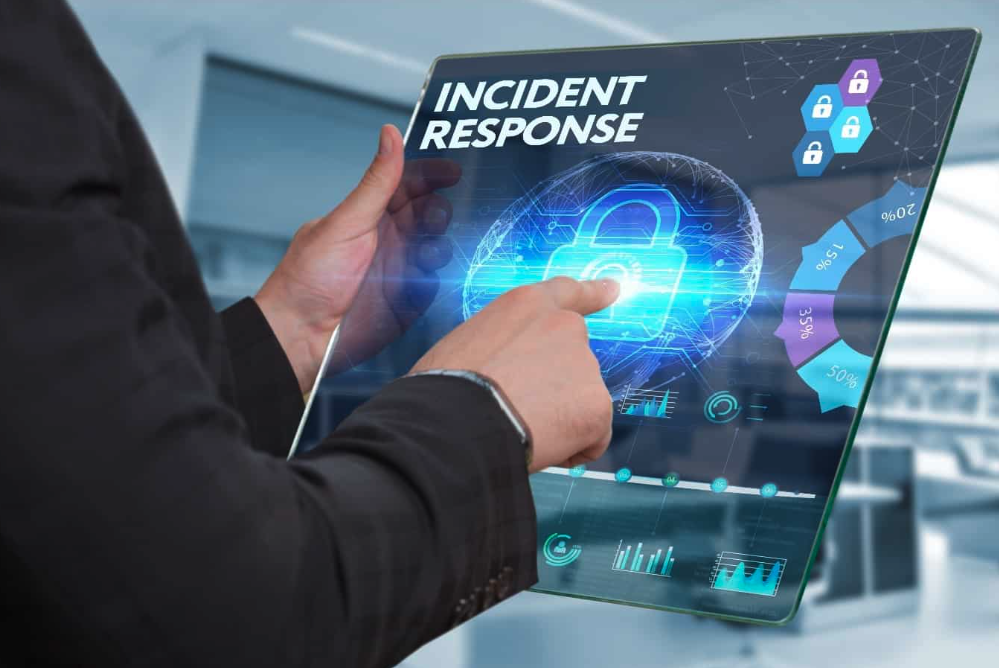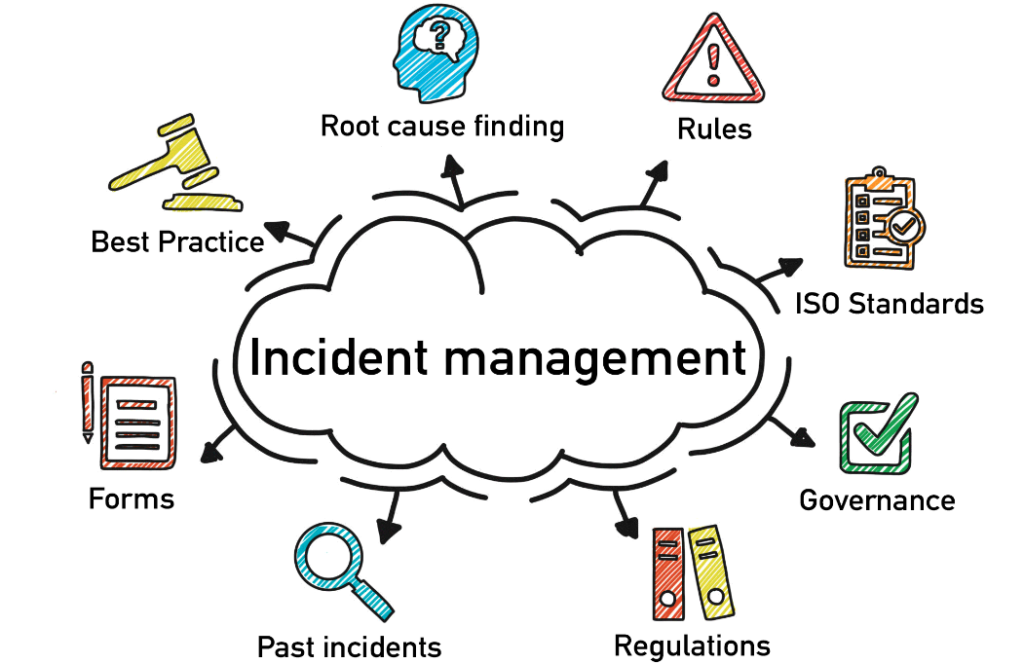
ITIL Incident Management Roles and Responsibilities (Image by Safety Stratus)

ITIL Incident Management Roles and Responsibilities (Image by Safety Stratus)
Clear incident management roles and responsibilities are central to a structured approach to managing unexpected business and IT operations disruptions.
This starts with a team where each member knows what to do when an incident occurs. This clarity reduces confusion, speeds response times, and ensures effective coordination.
Response efforts can only become chaotic with clearly defined roles, resulting in prolonged downtime and potential losses.
In general, when you begin to establish a solid IT incident management framework, roles, and responsibilities, you get this
So, we provide the full explanation to understand how incident management roles and responsibilities are critical to sustaining your business through turbulent times.
An Incident Management Team (IMT) is a group dedicated to preparing for and responding to unforeseen events in business and IT.
They’re the go-to group when things go awry, tasked with quickly identifying, analyzing, and solving problems to keep business operations smooth.
Their roles are well-defined, which is vital. That’s why the IMT cannot be separated from the incident management plan. The plan outlines the who, what, when, and how of incident response.
The incident management plan defines each team member’s specific roles and responsibilities during the various phases of an incident.
With an IMT, businesses can navigate challenges efficiently, safeguarding their operations and reputation.
As mentioned above, each role in incident management has specific responsibilities to handle IT incidents effectively, resulting in minimal service disruption.
The incident manager is at the command centre. This leader oversees the entire response process and ensures that every move is coordinated and effective. This role is pivotal, acting as the central command point during incidents.
Next, we have the tech lead, the primary technical responder with expertise. They delve into the “why” and “how” of the incident, lead the technical team, and maintain a line of communication with the incident manager. Their technical insight is critical to navigating the complexities of the incident.
Then there’s the communications manager. This role manages all communications, both internally and externally.
With a communication manager in your team, your business can craft updates with precision, keeping everyone informed – from team members to stakeholders.
Then, you will see a customer support lead who directly engages with customers, addresses their concerns, and updates them about the incident’s progress. This role is critical in maintaining customer trust and satisfaction during disruptive events.
Now we have 1st level technical support, the first responders to any incident. They’re like the string section, setting the tone for incident response, categorizing and addressing initial reports, and escalating issues as needed.
At the same time, we also need an IT operator to ensure the smooth running of day-to-day IT operations and to provide additional support during significant incidents.
Finally, the major incident team mobilizes for significant disruptions and brings specialized expertise to restore services quickly.
But remember, we also need other roles, such as analysts, to research similar incidents and provide historical data to inform response strategies.
We also need security experts to handle sensitive breaches, data leaks, and other security-related incidents.
And we need subject matter experts to provide specialized knowledge and skills depending on the nature of the incident.
These roles form a cohesive unit, each with a distinct part to play. This ensures the incident is managed effectively and harmony is restored swiftly. This orchestration of skills and responsibilities keeps businesses resilient in IT challenges.
Keep in mind incident management isn’t about pointing fingers; it’s about working together to overcome challenges and emerge stronger.
When your team understands and fulfills their responsibilities at each stage, they can turn every disruption into a learning opportunity and ensure your organization’s resilience in the face of the unexpected.
The initial steps involve recognizing and recording the incident. This is where incidents are differentiated from mere requests.
The service desk plays a key role here, logging details such as the user’s information and the nature of the incident, which are vital for the subsequent steps.
After logging, incidents are categorized and prioritized based on their impact and urgency. This classification is essential for efficient handling, as it aids in determining the necessary level of response and resources needed.
The service desk, often comprising 1st Level Technical Support, responds to the incident. If the issue surpasses their capability, it’s escalated to higher levels like the incident manager or a major incident team.
The investigation phase begins to identify the problem’s cause, an essential step for finding a solution. During this phase, roles such as incident manager and communications manager are central.
They provide a seamless flow of information between technical teams, management, and other stakeholders, including customers. Effective communication prevents duplication of effort and ensures everyone works toward a common goal.
After resolving the incident, confirming with the end-user that the issue has been satisfactorily addressed before formally closing it is essential. This step often includes a review to ensure the incident doesn’t recur.
Finally, there’s a focus on learning from the incident. Data gathered throughout the incident management process is analyzed to improve future responses and reduce the likelihood of similar incidents.
Throughout that holistic incident management process, the roles and responsibilities of each team member are clearly defined to ensure the effective handling of incidents.
This structured approach restores normal service operations swiftly and minimizes adverse impacts on business operations.

Best practices in this area focus on managing incidents throughout their lifecycle and ensuring a coordinated and systematic approach.
First thing first is a quick and accurate detection and classification of incidents. This involves configuring the proper data fields and setting up deduplication rules to group similar alerts. Only relevant and actionable events should trigger alerts.
Then, you must consider alerting mechanisms, which should be configured to avoid unnecessary notifications or alert fatigue. Yes, only relevant alerts should be sent to the incident management tool.
When managing Incidents, prioritizing is critical. Automation can prioritize each incident based on its impact on services and customers. This gives the on-call team clarity about the severity of the problem.
At the same time, routing and escalation policies must be in place to ensure that incidents reach the appropriate responder.
Collaboration platforms can reduce the time to assemble and discuss incidents, reducing the Mean Time to Resolve (MTTR).
And, of course, keeping both internal teams and customers informed about mitigation activities is essential.
Automated communication updates and maintaining a public status page are effective ways to keep everyone informed.
Automating as much of the incident resolution process as possible is beneficial. Documenting resolution attempts and maintaining a repository of workflows and reviews can help manage similar incidents in the future.
A thorough review, including a Root Cause Analysis (RCA), is essential for understanding the incident.
Metrics like the number of incidents per month, mean time to detection, and downtime rates should be monitored to gauge the effectiveness of the incident management process.
Those best practices emphasize the importance of a coordinated approach, clear procedures, automation, and continuous learning from incidents.
We’ve discussed the importance of a structured approach to effectively managing IT disruptions.
As we look to 2024 and beyond, adopting these roles and practices is more than necessary; it’s a strategic move for organizations.
Adopting these methodologies ensures resilience and adaptability in the face of IT challenges, safeguarding operations and maintaining customer trust in an ever-evolving digital landscape.
Right, this approach turns challenges into opportunities for growth and improvement, not just reacting to problems.
Now, the question is, when will you start using incident management roles and responsibilities effectively to meet the 2024 challenge? Why not get started now?